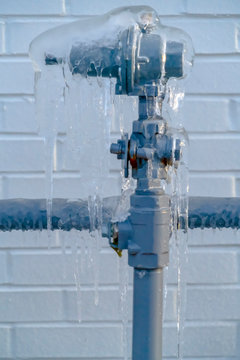Listed here below you can find a lot of sound ideas regarding Prevent Frozen Pipes .

Winter can damage your pipes, particularly by freezing pipelines. Right here's exactly how to prevent it from taking place and what to do if it does.
Introduction
As temperature levels decrease, the threat of frozen pipelines increases, possibly leading to costly repair work and water damages. Understanding how to stop icy pipelines is crucial for home owners in chilly environments.
Prevention Tips
Protecting susceptible pipelines
Cover pipelines in insulation sleeves or make use of warmth tape to safeguard them from freezing temperature levels. Concentrate on pipes in unheated or exterior locations of the home.
Heating strategies
Keep indoor rooms appropriately heated, particularly areas with plumbing. Open up cabinet doors to enable cozy air to circulate around pipes under sinks.
Exactly how to recognize frozen pipes
Look for lowered water flow from faucets, uncommon odors or noises from pipes, and visible frost on subjected pipes.
Long-Term Solutions
Architectural modifications
Consider rerouting pipes away from exterior walls or unheated areas. Add additional insulation to attics, cellars, and crawl spaces.
Updating insulation
Buy premium insulation for pipes, attic rooms, and walls. Appropriate insulation aids preserve constant temperatures and reduces the threat of icy pipes.
Protecting Exterior Pipes
Garden pipes and outdoor taps
Disconnect and drain pipes yard hose pipes prior to winter season. Mount frost-proof spigots or cover outside taps with insulated caps.
Comprehending Icy Pipelines
What causes pipes to ice up?
Pipelines ice up when exposed to temperatures listed below 32 ° F (0 ° C) for expanded durations. As water inside the pipelines ices up, it expands, putting pressure on the pipe walls and potentially causing them to burst.
Risks and damages
Frozen pipes can lead to supply of water disruptions, property damages, and pricey repair services. Burst pipes can flooding homes and trigger comprehensive structural damages.
Indications of Frozen Pipeline
Identifying icy pipes early can stop them from rupturing.
What to Do If Your Pipelines Freeze
Immediate actions to take
If you suspect icy pipes, keep taps open up to alleviate pressure as the ice melts. Make use of a hairdryer or towels taken in warm water to thaw pipelines gradually.
Verdict
Preventing frozen pipelines requires aggressive measures and fast reactions. By understanding the causes, indications, and safety nets, homeowners can safeguard their pipes throughout winter.
6 Proven Ways to Prevent Frozen Pipes and Protect Your Home
Disconnect and Drain Garden Hoses
Before winter arrives, start by disconnecting your garden hoses and draining any remaining water. Close the shut-off valves that supply outdoor hose bibs and leave the outdoor faucet open to allow any residual water to drain. For extra protection, consider using faucet covers throughout the colder months. It’s also important to drain water from any sprinkler supply lines following the manufacturer’s directions.
Insulate Exposed Pipes
Insulating your pipes is an effective way to prevent freezing. Pipe insulation is readily available at home improvement stores and is relatively inexpensive. Pay close attention to pipes in unheated areas such as the attic, basement, crawl spaces, or garage. Apply foam insulation generously to create a buffer against the cold. You can also wrap your pipes in heat tape or thermostat-controlled heat cables for added warmth.
Seal Air Leaks
Inspect your home for any cracks or openings that could let in cold air. Seal any holes around the piping in interior or exterior walls, as well as the sill plates where your home rests on its foundation. Additionally, make sure to keep your garage door closed unless you’re entering or exiting. Leaving it open creates a significant air leak that can lead to frozen pipes.
Allow Warm Air Circulation
During cold snaps, it’s essential to allow warm air to circulate evenly throughout your home. Leave interior doors ajar to promote better airflow. Open kitchen and bathroom cabinets to help distribute heat consistently around the rooms. If you have small children or pets, be sure to remove any household chemicals or potentially harmful cleaners from open cabinets for safety.
Let Faucets Drip
A small trickle of water can make a big difference in preventing ice formation inside your pipes. When temperatures drop significantly, start a drip of water from all faucets served by exposed pipes. This continuous flow helps prevent the water from freezing. Additionally, running a few faucets slightly can relieve pressure inside the pipes, reducing the chances of a rupture if the water inside does freeze.
https://choateshvac.com/6-proven-ways-to-prevent-frozen-pipes-and-protect-your-home/

I hope you enjoyed reading our topic on Preventing and dealing with frozen pipes. Thank you for finding the time to read our post. Are you aware of somebody else who is looking into the subject? Feel free to share it. Many thanks for being here. Revisit us soon.
Call Us Now